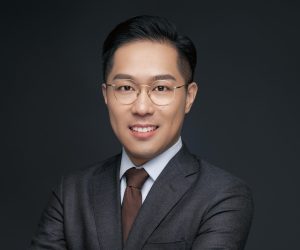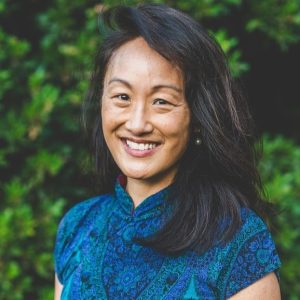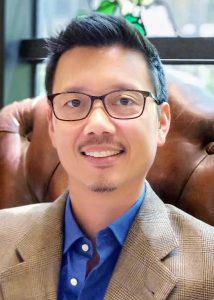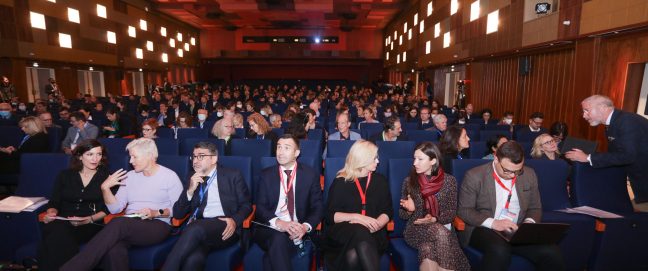Change is inevitable, but what forms will it take?
Asian philanthropists pivoted almost immediately to tackle the first wave of the pandemic, reflecting the flexible, innovative and catalytic nature of philanthropy. As funders rise to plug the gaps in the socio-economic system that have surfaced from the pandemic, we are seeing an evolution of leaders rising to meet the moment.
This webinar was part of Alliance’s 25th anniversary series, which looks at what the future of philanthropy holds in different regions around the world. It focused on Asia and was produced in partnership with AVPN.
Moderated by Andrew Milner, associate editor of Alliance magazine, the speakers were Henry Ji, Partner at Zhong Lun Law Firm; Diah Saminarsih, Founder of the Centre for Indonesia’s Strategic Development Initiatives; Kevin Teo, Chief Operating Officer at AVPN; and Jennifer Chen, Chief Executive of the Chen Yet-Sen Family Foundation.
Audience poll
Andrew kicked off the webinar with a poll, asking the audience: what is the most important challenge facing Asian societies in the next decade?
The answers were as follows:
Climate change – 50%
Provision of livelihoods – 19%
Food security – 15%
Healthcare – 11%
Other – 3%
Henry Ji
 Ji was the first speaker to present, providing an introduction to Chinese philanthropy. According to the latest official donation report by China Charity Alliance the total donations a month in the Chinese market reached ‘23 billion USD’ and was growing every year. In 2019 ‘the donation amount was 2% of the GDP of China.’ China’s enterprises remain the biggest donors, with 72% of funding going towards ‘education, poverty alleviation and health.’
Ji was the first speaker to present, providing an introduction to Chinese philanthropy. According to the latest official donation report by China Charity Alliance the total donations a month in the Chinese market reached ‘23 billion USD’ and was growing every year. In 2019 ‘the donation amount was 2% of the GDP of China.’ China’s enterprises remain the biggest donors, with 72% of funding going towards ‘education, poverty alleviation and health.’
During the COVID pandemic, attitudes shifted among China’s high net worth individuals towards how they could use their wealth to give back to society. According to Forbes’ 2021 charity ranking, the ‘top 100 entrepreneurs contribute 3.8 billion USD in total,’ which was 37% more than in 2020. HNWIs are now gaining a lot of attention, particularly among charitable organisations advocating for ‘private-public partnership work.’
However, there are obstacles to philanthropic giving in China, as ‘government scrutiny of philanthropy tends to be more and more strict.’ Charity registration is becoming more difficult, especially for INGOs. The legal vehicles through which to do philanthropy are also limited. The three main ones are foundations, social service organisations and social organisations. Though charitable trusts are growing, there is no favourable tax incentive and the ‘compliance work tends to be quite burdensome when compared to operating a for-profit company in China.’ Donor-advised funds, companies limited by guarantee, B corps, and social enterprises ‘have not been formally introduced to China so far.’
Diah Saminarsih
 Saminarsih began by introducing the Centre for Indonesia’s Strategic Development Initiatives (CISDI), which is a healthcare think tank founded in 2014 to create ‘a pathway towards transformative primary healthcare by strengthening the government-owned community health centres.’
Saminarsih began by introducing the Centre for Indonesia’s Strategic Development Initiatives (CISDI), which is a healthcare think tank founded in 2014 to create ‘a pathway towards transformative primary healthcare by strengthening the government-owned community health centres.’
The organisation responded to the pandemic by providing access to testing for health workers and ensuring PPE was available. When the pandemic continued to worsen, CISDI pivoted towards a pandemic-response model and redesigned training materials and methods of delivery, using 8 primary healthcare centres as a pilot. This was replicated by the provincial government of West Java with 100 primary healthcare centres, with a reach of 1 million people.
Saminarsih stated that CISDI overcame challenges ‘by being agile…we didn’t have any problems pivoting our outlook from a think tank’ into a pandemic-response organisation. Her advice to other NGOs is to ‘not to be afraid of changes…to try and to innovate, because innovation takes bravery, and in the pandemic innovation has to work together hand in hand with bureaucracy.’
The initial piloting phase of CISDI’s pandemic response was supported by Indonesian philanthropy, as well as the West Java government’s upscaling of it. CISDI is used to working with multiple actors and stakeholders. Saminarsih believes that post-pandemic, ‘multi-stakeholder, multi-collaborative interventions will be the model to progress.’
While ‘Indonesian philanthropy is a robust network…in the future it will have to join forces with other philanthropy in the region and also globally.’ She added that platforms such as AVPN will be a ‘strategic hub’ for collaboration among philanthropists across the continent. Saminarsih finished by saying that the main challenge facing Indonesian philanthropy is ‘looking inward as opposed to looking outward.’
Jennifer Chen
 Chen spoke about the Bridge the Gap Hong Kong campaign that she is spearheading, which brings together funders to provide emergency support to underfunded NGOs. She described it as a reaction to the pandemic, where many NGOs found that their sources of funding were stripped away from them.
Chen spoke about the Bridge the Gap Hong Kong campaign that she is spearheading, which brings together funders to provide emergency support to underfunded NGOs. She described it as a reaction to the pandemic, where many NGOs found that their sources of funding were stripped away from them.
As a response to the pandemic, the Hong Kong government announced that all citizens would receive $10,000. The Bridge the Gap campaign encouraged the top 1% of wealthy individuals in Hong Kong to instead donate that $10,000 to a pre-approved NGO selected by the campaign. Funders involved in the campaign would then double that donation. The campaign brought together over 10 different funders, with 25 NGOs benefiting from $25 million of additional funding.
As a follow on to the campaign, Chen is performing impact assessment, as ‘spending money is very necessary and important and easy to do, but we need to have accountability.’ She has launched a survey for the NGOs that received the funding to find out how they spent the money and whether that funding was used strategically.
She stated that her desire is to bring ‘this message of operational funding or unrestricted funding…to the grantmakers and funders in the philanthropy space…encouraging more people to donate or give grants that don’t necessarily have to be dedicated to a programme.’ Using Mackenzie Scott’s recent grants as an example, Chen added that ‘international best practice shows us that operational funding is the way forward’ and that operational funding is very much about relationship building, and investing in the organizations and people behind them.
Kevin Teo
 Teo began by speaking about the themes of collaboration, innovation and impact management in Asian philanthropy. On the collaboration side, he stated that he’d seen AVPN members were ‘more open to reaching out and connecting with one another…to figure out the best ways of deploying capital.’
Teo began by speaking about the themes of collaboration, innovation and impact management in Asian philanthropy. On the collaboration side, he stated that he’d seen AVPN members were ‘more open to reaching out and connecting with one another…to figure out the best ways of deploying capital.’
AVPN has recently created the philanthropic pooled fund programme to deliver unrestricted funding to chosen grantees in the healthcare sector. This funding covers their operating expenses, ‘shifting power to organisations on the ground to figure out what’s best…and what’s most needed in terms of allocation of resources so that they are best equipped to respond to these dynamic changes in the local context.’
Teo also touched on the topic of impact investing, and AVPN’s advocacy for the ‘continuum of capital’ which looks at ‘different forms of resources our member organisations…possess and the best ways they can deploy it…to organisations on the ground.’ This involves exploring the most effective financing vehicles and tools which would help NGOs or social enterprises address core social needs.
Teo commented that he is heartened by the ‘strong convergence around different standards and frameworks…a lot of this driven by efforts from the impact management project, where they have consolidated standards bodies from the ESG investing or sustainability reporting community through impact investing and also the philanthropy and development sectors.’
The project looks for the ‘cross-connections around their respective languages, taxonomies and frameworks, to look for the commonalities rather than differences across them.’ In doing so, the project aims to reduce the confusion in this space for the NGOs and social enterprises utilizing the frameworks, as well as the funders who are channelling resources.
On the subject of the UNDP’s sustainable development goals (SDGs) impact standards, Teo commented that they are ‘not something only governments are responsible for, everybody within society is essentially a stakeholder and has a role to play.’ He is encouraged to see ‘harmonisation around how all this works across the ecosystem.’
Teo commented that a silver lining of the pandemic has been a more positive shift in attitude towards collaboration, as people were forced to ‘reach out to others that might be in the same space and identify strengths with collaborators’ compared to a pre-COVID environment where the ‘pace was so much faster and decision-making tended to happen internally.’ He added that this ‘openness to collaborating and learning from others’ is an emerging trend across Asia.
Audience poll
The second audience poll question was: what changes do you think the COVID emergency will make to philanthropy in Asia?
The results were as follows:
More collaboration between sectors (philanthropy, government and business) – 48%
More emphasis on funding to meet emergencies – 24%
No lasting changes – 16%
More funding to causes of equality and justice – 12%
Audience Q&A
Sara Azfar from the Asian Development Bank asked ‘are there differences between domestic and regional philanthropy within China?’
Henry Ji answered, explaining that China is very diverse, and that although there are overall national policies, different provinces will have local factors to bear in mind. Many wealthy Chinese families or big foundations will also have philanthropic operations in other Asian countries such as Hong Kong and Singapore, and will therefore be subject to local laws there.
Ji added that China has ‘very strict foreign exchange restrictions,’ so when dealing with domestic and regional philanthropy these ‘strict legal barriers’ must be considered, as well as how to ‘collaborate with local partners and deal with local government and other stakeholders.’
The next question was from Lam Nguyen-Phuong, who asked ‘relative to wealth, why is Asian giving only a fraction of what it is in Europe and even America?’
Jennifer Chen answered, agreeing that Asia does lag behind in terms of philanthropic giving. She brought up the charitable foundations of Chinese billionaire business magnates Jack Ma (Founder, Alibaba) and Pony Ma (Founder, Tencent). Though both foundations do give, the ‘percentage of their overall market cap is a tiny amount compared to some Western donors.’ Chen theorised this was because wealth had ‘come very quickly in a short period of time’ to many countries in Asia, and the traditional way of giving ‘is very Confucian and cultural-based.’ However, she is hoping that Asian philanthropy is ‘just catching up…the best is yet to come.’
She commented that a lot of giving was done via corporations rather than individual donors, and acknowledged that China, in particular, had just ‘burst onto the world stage in terms of its high-net-worth status’ and was figuring out ways of giving that were ‘not necessarily copying the way the Western world has done it, but trying to find a hybrid way.’
Teo reflected on how quickly the attitude towards philanthropy in Asia has shifted in the past decade. A lot of wealth was created by ‘first-generation wealth holders where they were operating in an emerging market.’ Now, the next generation of wealth holders’ attitudes towards philanthropy have ‘leapfrogged elsewhere…we don’t have to go through all the interim lessons other societies have gone through.’ With new technology making information widely accessible, Asian philanthropists can ‘learn from best practice across the board.’
Milner then asked the panel about their thoughts on local vs national and international giving, and which is more efficacious. Chen answered that both are important, and spoke about the need to be strategic with giving: ‘we want to do our homework…we want to be able to have domain expertise, the ability to understand with a lot of depth how the organisation works, how the sector works,’ and ensure that it makes a difference. Her foundation nurtures close relationships with its NGO grantees to help them grow and be more efficient with the allocation of resources.
Final thoughts
To bring the event to a close, Andrew asked each panellist to give a short summary of their key takeaways from the discussion. Saminarsih spoke about the theme of collaboration, stating that ‘decisions need to be made based on what you want to achieve together as equal partners in a collaboration.’ Civil society organisations and philanthropy will ‘face the question of whether both partners are ready to engage government, to upscale.’ Her key takeaway is ‘thinking about [philanthropy] from a systems perspective’ to create systemic and sustainable change.
Ji commented that despite facing obstacles, we should ‘stay optimistic and connected amidst many global crises and challenges.’ He commented on the need to build diverse and strong partnerships which will be the ‘decisive factor to shape a better Asian philanthropy sector in the next decade.’
Teo also took an optimistic view of the future and looked forward to welcoming Alliance and the other panellists to the next AVPN conference taking place in Bali in June 2022. Chen gave the last word of the event; ‘I hope that through collaborating we can really make lasting change.’
Watch a recording of the webinar here.
Annmarie McQueen is the is the Marketing, Advertising, and Events Manager at Alliance.
 This event was part of our #Allianceat25 webinar series celebrating Alliance’s 25th anniversary. Our next webinar will explore the future of philanthropy media on November 17, 12 pm ET. You can register for it here.
This event was part of our #Allianceat25 webinar series celebrating Alliance’s 25th anniversary. Our next webinar will explore the future of philanthropy media on November 17, 12 pm ET. You can register for it here.
This November, Alliance is also teaming up with The Nonprofit Quarterly (NPQ) to offer new readers a joint subscription deal. Subscribe now to get 1 year of digital access to both Alliance and NPQ for a special bundle price. Offer ends November 30.





Comments (0)